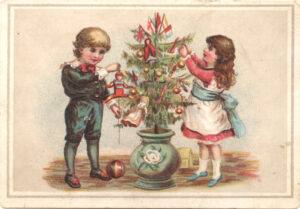
The first holiday trees appear like Halloween ghosts foretelling Christmas Future. Then, during the first two weeks of November, decorated synthetic evergreen trees stand in shopping malls, grocery stores & check-out counters. Some are tall. Some are short. All seem to whisper, “Forget the turkey, it’s time to fill Santa’s sleigh.”
As Thanksgiving draws near, trees sprout in living rooms. Sometimes boxes filled with a family’s favorite tree ornaments come out of storage while people talk about Christmases Past.
And now it’s December, the traditional festive tree season.
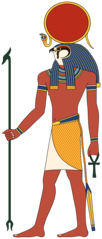
In the northern hemisphere, the history of festive winter trees and greenery is longer than we realize, but in every case the tree represents new growth and hope. So here is a brief overview of winter trees through the ages.
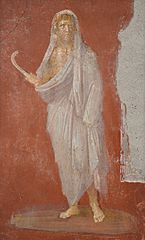
Ancient Egyptians worshipped Ra, the Sun God with a hawk’s head who carried the sun as a blazing disk in his crown. Egyptians believed that when days grew shorter, Ra became ill. After the Winter Solstice on December 21, Ra began to recover. Believers filled their homes with green palms and papyrus reeds to celebrate Ra’s renewed health, and the triumph of life over death.
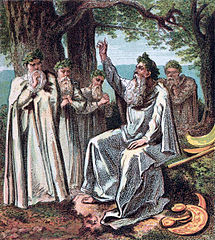
Romans enjoyed an annual Saturnalia to celebrate the agricultural god Saturn between December 17 and 23. Participants adorned Saturn’s temples with evergreens, anticipating the farms and orchards that would soon be fruitful. No doubt evergreen decorations were the most staid part of the annual celebration.
Moving northward, Druids believed trees were a gift rom the gods to mark time and seasons. During the dark months, Druids decorated sacred oaks with mistletoe and lights to celebrate life’s wisdom.

Vikings also worshipped trees, especially evergreens which they viewed as a plant unique to the sun god, and a reminder that the darkness of winter would end. Often people decorated the trees with carvings of the gods and food as a way to entice spirits to return with spring.
In particular, the Norse cosmos featured a tree called Yggdrasil. This immense ash tree was the site where the gods held their courts. Its branches extended into the heavens. There were also three roots that extended into the well Urðarbrunnr in the heavens; the spring at Hvergelmir, and another well, the Mímisbrunnr.
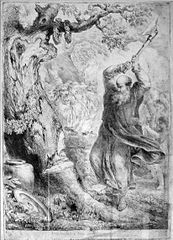
St. Boniface Cuts Down the Yggdrasil
According to Christian legend, during the 8th century an Anglo-Saxon missionary named Boniface worked to convert pagans in Germany. In the area known as Hesse, he came upon pagans preparing a ritual sacrifice at an oak tree called the Donar Oak. Boniface picked up an axe to fell the tree when suddenly a wind blew it over. Shocked by events, particularly the fact their gods did not immediately smite Boniface, people accepted Boniface’s god, who was clearly stronger than theirs. Legend says Boniface used the tree’s wood to build a chapel to St. Peter, and planted a small fir tree at the spot where the Donar Oak once stood.
🌲🌲🌲Medieval Trees🌲🌲🌲
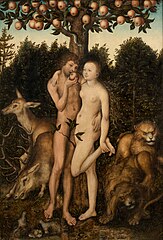
Adam & Eve & the Paradise Tree
December 24 is the feast day for Saints Adam & Eve, the individuals who disobeyed God and were evicted from the Paradise known as the Garden of Eden. Most saints gained their status by living obedient lives and performing miracles; Adam & Eve were evicted from Paradise for disobedience, but never mind the incongruity.
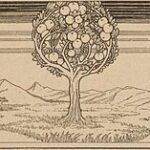
In the 12th century people celebrated Saints Adam & Eve with a Paradise Play depicting their creation and eviction, and a constant prop was the Paradise Tree made from an evergreen tree with adorned with bright red apples.
Martin Luther & An Indoor Tree
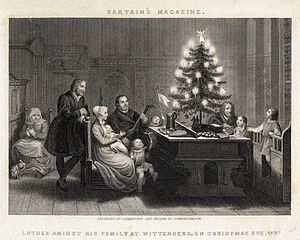
According to legend, in the 16th century religious reformer Martin Luther was walking home one winter evening when he observed bright stars in a dark sky. Inspired he created a way to share the magical experience with his family by bringing an evergreen tree into his home, lighting candles on its branches, and decorating it with gold and silver ornaments. Some say that Luther saw this tree as a perfect image of the cosmos — a symbol of the new Yggdrasil.
An alternate legend explains that it was Luther’s wife Katherine who inspired the custom. One Christmas Eve she placed paper roses in their windows. Martin decided to improve on her decorations by bringing a small fir tree inside and decorating it with the paper roses.
Birth of the “English” Christmas
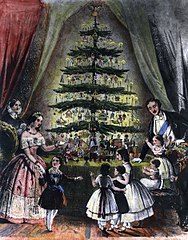
Christmas trees became a German tradition, and after Prince Albert married Queen Victoria he wanted to bring Christmas trees into his home. In 1846 an illustration of this exotic import appeared in the Illustrated London News.
Everything Queen Victoria’s family did became popular, and Christmas trees were no exception. As the 19th century continued, England sourced trees from German forests.
Christmas tree harvesters chopped off the top of young evergreen trees to create Christmas trees that were between four and six feet tall. Once the top was removed, the remaining tree was unable to grow taller. This created a deforestation problem in Germany.
Enter the Artificial Tree

In response to the forestry crisis, people began creating feather trees. Goose, turkey, and swan feathers were dyed green and attached to a wooden dowel with wires or sticks that formed the branches. The branches were tipped with artificial berries to hold candles. The trees became quite popular in America during the 1920s, but fell out of use in the 1930s when real trees became more abundant.
In 1930 Addis Houseware Company introduced an artificial tree made of the same animal hair bristles the company used in toilet brushes. The resulting tree branches were stronger than feathers.

Aluminum Christmas trees made their appearance in 1958 and continued to be popular into the 1970s. The sparkling trees were sleek, modern, and they didn’t drop needles. A 6-foot tree cost $80.
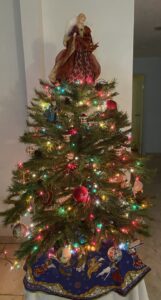
The shiny trees reached the height of their popularity in 1965. But disaster struck aluminum trees on December 9, 1965 when approximately 36 million Americans tuned in to A Charlie Brown Christmas. When Charlie Brown and Linus looked for a tree they could use in their Christmas play, they found an aluminum tree display. Linus tapped on the shell, and sarcastically concluded the aluminum tree brought Christmas close to a person. [snark] Charlie eventually selected a spindly living tree. Aluminum trees, by comparison, were false pretenders. Sales plummeted.
Today Christmas trees come in all sizes. Artificial trees range from a one-foot sparkly pre-lit tree to over 9 feet of glittering festive fun. Live trees also abound with their unique scent. Some folks string lights through potted palm fronds. But no matter what tree you enjoy, large or small; living, cut, or artificial, Christmas trees bring joy and hope as we close out one year and begin another.
🌲 🌲 🌲
Illustrations
Children Decorating Christmas Tree. Woolson Spice Company.
Ra by Eternal Space.
Saturn. Naples Archeological Museum. Carole Radiate.
Druids of Old England. 1868.
Yggdrasil from Northern Antiquities by Oluf Bagge. 1847.
Boniface Chops Down Sacred Tree. Bernhard Rode. 1781.
Adam & Eve. Workshop of Lucas Cranach. 1527. Gotogo.
Paradise Tree. E. M. Lilien. 1914.
Martin Luther’s Christmas Tree. Sartain’s Magazine. 1860.
Royal Christmas Tree. 1848.
Replica of Feather Christmas Tree. By a2gemma.
Aluminum Christmas Tree by Michelleration.
Photo by Author.
David Murray. “How Charlie Brown Killed the Aluminum Christmas Tree.” Great Falls Tribune. Dec. 8, 2017.
Amy Tikkanen. “How Did the Tradition of Christmas Trees Start?” Britannica.
“The Symbolism of Christmas Tree Decorations.” CTB. Nov 2 2021

Sandra Wagner-Wright holds the doctoral degree in history and taught women’s and global history at the University of Hawai`i. Sandra travels for her research, most recently to Salem, Massachusetts, the setting of her new Salem Stories series. She also enjoys traveling for new experiences. Recent trips include Antarctica and a river cruise on the Rhine from Amsterdam to Basel.
Sandra particularly likes writing about strong women who make a difference. She lives in Hilo, Hawai`i with her family and writes a blog relating to history, travel, and the idiosyncrasies of life.

